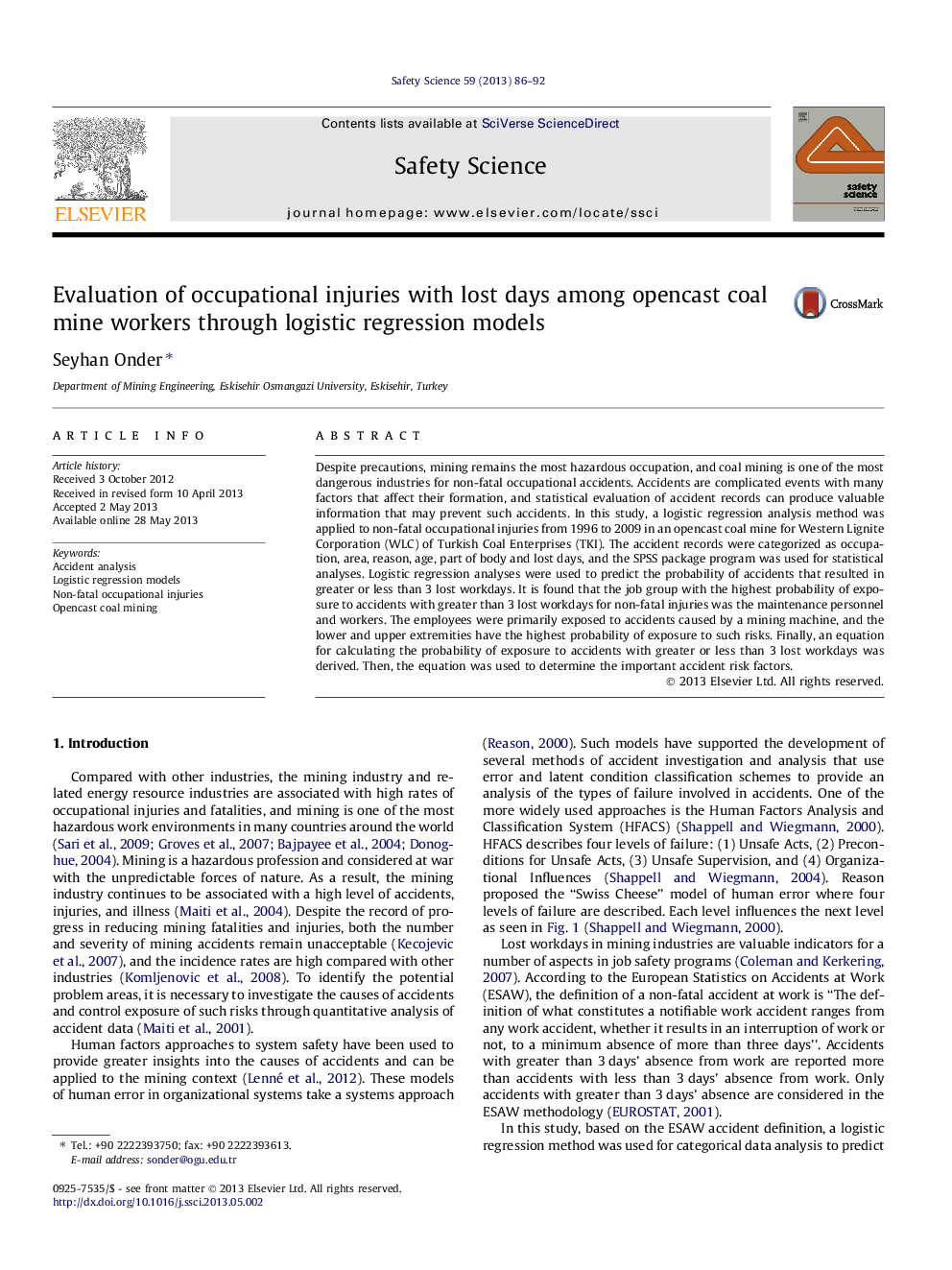| Article ID | Journal | Published Year | Pages | File Type |
|---|---|---|---|---|
| 589393 | Safety Science | 2013 | 7 Pages |
•The logistic regression prediction model was developed.•It was found that the maintenance personnel and workers have the highest risk.•The parts of the body with the highest risk were the upper and lower extremities.•Model can be used for various components of the accident.•The equipment protecting the lower and upper extremities can be effective in decreasing non-fatal work accidents.
Despite precautions, mining remains the most hazardous occupation, and coal mining is one of the most dangerous industries for non-fatal occupational accidents. Accidents are complicated events with many factors that affect their formation, and statistical evaluation of accident records can produce valuable information that may prevent such accidents. In this study, a logistic regression analysis method was applied to non-fatal occupational injuries from 1996 to 2009 in an opencast coal mine for Western Lignite Corporation (WLC) of Turkish Coal Enterprises (TKI). The accident records were categorized as occupation, area, reason, age, part of body and lost days, and the SPSS package program was used for statistical analyses. Logistic regression analyses were used to predict the probability of accidents that resulted in greater or less than 3 lost workdays. It is found that the job group with the highest probability of exposure to accidents with greater than 3 lost workdays for non-fatal injuries was the maintenance personnel and workers. The employees were primarily exposed to accidents caused by a mining machine, and the lower and upper extremities have the highest probability of exposure to such risks. Finally, an equation for calculating the probability of exposure to accidents with greater or less than 3 lost workdays was derived. Then, the equation was used to determine the important accident risk factors.
